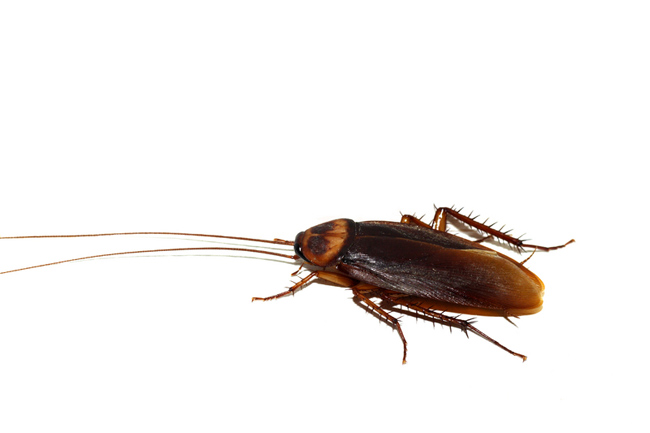Why Today's Cockroaches Are the Biggest Ever

New research finds what anyone who’s experienced a roach infestation has always known: Cockroaches are weird.
Many insects are pint-sized compared to their ancient ancestors, but the biggest cockroaches ever are alive and scuttling today, and scientists have long wondered why. The new study finds that roaches don't get a growth boost from high-oxygen environments like those found millions of years ago. Instead, roaches take advantage of the extra oxygen by shrinking their breathing organs and redirecting their energy to other vital tissues.
The research was presented Monday (Nov. 1) at the annual meeting of the Geological Society of America in Denver.
Big bugs
Many insects grow larger when the air around them is more oxygen-rich. That's because bugs breathe through their skin, using a series of tubes called tracheal tubes. When oxygen levels rise, the tubes can be narrow, but still deliver enough oxygen to power big bugs.
Because the oxygen concentration of air on Earth has varied over our planet’s history, so has the size of many insects. Some fossilized dragonflies have wingspans of up to 28 inches (71.1 centimeters). Today, lower oxygen levels ensure that bugs can't get that big because their tracheal tubes would have to become unsustainably large in order to deliver enough oxygen.
But cockroaches defy the oxygen-size connection: There are no cat-sized cockroaches in the fossil record. That makes it hard to understand the link between oxygen and insect size, Arizona State University postdoctoral researcher John VandenBrooks said in a statement.
Get the world’s most fascinating discoveries delivered straight to your inbox.
"Our main interest is how paleo-oxygen levels would have influenced the evolution of insects," VandenBrooks said.
To find out, VandenBrooks and his colleagues raised roaches, dragonflies, grasshoppers, mealworms, beetles and other insects under different levels of oxygen, ranging from 12 percent of the air (the lowest oxygen levels on Earth have been in the past) to 40 percent (just over the highest oxygen levels have ever been). Currently, the air we breathe is about 21 percent oxygen.
Most of the bugs grew larger more quickly with higher oxygen percentages, including the finicky dragonflies, which had to be hand-fed daily to survive. But roaches were different. They didn't grow any larger, and they took twice as long to develop into adulthood.
"It is the exact opposite of what we expected," VandenBrooks said.
Breathing easy
So the researchers took a closer look at the roaches' tracheal tubes. The tubes were smaller in the high-oxygen roaches. That suggests that, unlike other bugs, roaches shunt their resources around in response to oxygen levels, according to the researchers. By easing off the growth of tracheal tubes, the roaches may be able to earmark energy for other tissues involved with processes such as digestion and reproduction.
The next step is to examine the tracheal tubes of insects fossilized in amber to determine whether their size reveals past oxygen levels, VandenBrooks said.
"There have been a lot of hypotheses about the impact of oxygen on evolution of animals, but nobody has really tested them," VandenBrooks said. "So we have used a two-pronged approach: One, study modern insects in varying oxygen levels and two, study fossil insects and understand changes in the past."

Stephanie Pappas is a contributing writer for Live Science, covering topics ranging from geoscience to archaeology to the human brain and behavior. She was previously a senior writer for Live Science but is now a freelancer based in Denver, Colorado, and regularly contributes to Scientific American and The Monitor, the monthly magazine of the American Psychological Association. Stephanie received a bachelor's degree in psychology from the University of South Carolina and a graduate certificate in science communication from the University of California, Santa Cruz.
